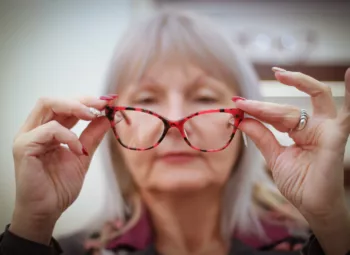
The most common cause of cataracts is aging. According to the National Eye Institute, in 2010, 68.3% of adults in the United States, 80 years old or older, have had, or still have cataracts. Like wrinkles, crepey skin, and brittle bones, as we age, almost everyone gets cataracts eventually. However, your risk for cataracts can vary depending on a number of factors including your overall health and family history.
Cataracts Risk Factors
Certain risk factors contribute to the onset of cataracts. There’s not much you can do about most of these factors, but there are certain things you can do to delay the development of cataracts.
Age
Nothing can be done about this factor, though healthy habits help with overall health. There are also superfoods that help to prevent age-related eye conditions. Read “8 Essential Nutrients Your Eyes Need,” to learn more.
Health Factors
A number of risk factors associated with overall health can also increase the chances of cataracts. These include:
- Obesity
- Hypertension (high blood pressure)
- Smoking
- Years of excessive UV exposure
Past eye injury or inflammation
Scar tissue from a previous injury or eye inflammation can contribute to the development of cataracts.
Steroid medications
Steroid, or anti-inflammatory, medications, whether oral, nasal spray (for asthma and other respiratory issues), or joint injections for sciatica, arthritis or joint pain, can be a risk factor for posterior subcapsular cataracts.
Diabetes
People with diabetes are more likely to get cortical and posterior subcapsular cataracts.
Extreme Nearsightedness
Persons with extreme nearsightedness have a greater risk of posterior subcapsular cataracts.
Three Types of Cataracts
There are three primary types of cataracts, classified by their location on the lens and impact on vision. They all form in different areas of the lens, grow at different speeds, and cause varying symptoms.
Nuclear Sclerotic Cataracts
Age-related cataracts, or nuclear sclerotic cataracts, are the most common type, and the one that gradually forms in the center of the lens of older adults. As it grows, it begins to harden and affect more layers of the lens, slowly decreasing a patient’s quality of vision and ability to focus. These visual symptoms of age-related cataracts typically only become noticeable after it’s been present for several years. In some cases, an odd phenomenon can occur as it spreads. The person with the cataract may actually have improved close-up vision. However, this improvement is never permanent, and if left untreated, the cataract will eventually cause complete blindness.
Cortical Cataracts
When a cortical cataract forms, it starts at the outer edges of the lens extends toward the center of the lens. These opaque areas, which look like spokes on a wheel, interrupt the reception of light, causing blurred vision, glare, contrast and depth perception. Cortical cataracts are usually caused by aging, eye trauma, or illness, and typically develop in both eyes, but can form in only one of them.
Posterior Subcapsular Cataracts
The posterior subcapsular cataract is the most rapidly forming type, growing on the underside of the lens, in the membrane sac that secures the lens to your eye. Obvious symptoms of this degenerative eye condition can develop in a matter of months. This type of cataract primarily causes issues with reading and night vision, with visual symptoms like halos or glare around lights, making it especially difficult to drive at night.
Cataract Symptoms
Symptoms of cataracts may not be apparent during the early stages of cataract development. In fact, some patients experience no visual symptoms of cataracts within the first few years of their development, and several years before the vision is grossly affected. This is because cataracts symptoms can range in terms of severity, and the more common types develop very slowly.
The Visual Signs of Cataracts
- Blurry, cloudy, or dim vision
- Sensitivity to light
- Halos or visual glares
- Bad night vision
- Unstable vision prescriptions
- Double vision
- Requiring extra light to see
- Colors appearing faded or yellowed
Cataract Treatment
There are no medications, eye drops, exercises, or glasses that will cause a cataract to disappear once it is formed. Surgically replacing the lens is the only remedy to remove a cataract. Cataract Surgery is one of the most common, routine surgeries in the United States, with millions of procedures performed annually, and 95% of patients experiencing improved vision.
See Better than Before the Cataract Formed
Getting cataract surgery will not only restore your vision, but with advanced Intraocular Lens Implants (IOLs), you can enjoy even better vision than you had before. With premium IOLs, you can correct any existing refractive errors you had prior to developing cataracts. That means you can permanently treat your cataracts and fix any other vision problems all at the same time.
Prioritize Your Eye Health by Scheduling a Cataract Exam with NeoVision
At NeoVision Eye Center, our ophthalmologists specialize in the early diagnosis and treatment of all age-related eye conditions. If cataracts are detected during an exam, there are ways to slow their growth, though ultimately, cataract surgery is the only treatment.
Schedule an Eye Exam in Union City
To ensure the longevity of your eye and vision health, contact our specialists at NeoVision via the form below to schedule a comprehensive eye exam.
"*" indicates required fields





